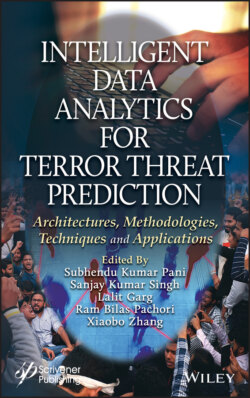Читать книгу Intelligent Data Analytics for Terror Threat Prediction - Группа авторов - Страница 28
1.4.2 Combating Misinformation on Instagram
ОглавлениеClassification of shared contents by users in social media is prevalent in combating misinformation. Baseline classification algorithms like Naïve Bayes theorem and SVM models have been used extensively for detecting rumor as discussed Section 1.4. Even though these algorithms classify rumors and facts in some manner, still there is a need to come up with some excellent techniques which may improve efficiency in rumor classification. Nowadays, social networks like Facebook, WhatsApp, Instagram and Twitter are using good techniques, but still they failed to classify the rumors exactly.
One of the popular social network, Facebook, has started in Instagram application (in US) to detect whether given post contains fact-information or false-information through some third party called as fact-checkers [33]. These third-party-fact-checkers are located globally and find rate of fact and false about particular post. When something is wrong in any post immediately fact-checkers check ratio of fact or misinformation.
If any post contains more false ratio then immediately it labels as “False information” otherwise no. Now it is the user’s responsibility to view or not that particular post based on false ratio and fact ratio, about share to their friends, communities or not. Using third-party-fact-checkers, Instagram is trying to combat misinformation on social networks. Figure 1.6 will give you brief idea about this method.
Figure 1.6 Combating misinformation in Instagram [33].
